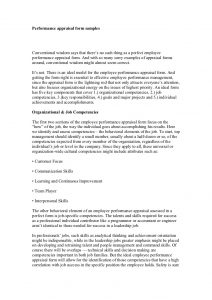What Is A Bank Reconciliation Statement

We’ll explore the definition of bank reconciliation, why it’s important, and a step-by-step process for performing bank reconciliations. We’ll also look at common sources of discrepancies between financial statements and bank statements to help you identify fraud risks and errors. Performing regular bank reconciliations is key to keeping on top of your company’s financial health and paving the way for sustainable business growth. In the absence of proper bank reconciliation, the cash balances in your bank accounts could be much lower than expected, which may result in bounced checks or overdraft fees.
How To Do A Bank Reconciliation: Step By Step
This is also known as an unfavorable balance as per the cash book or an unfavorable balance as per the passbook. Deposits in transit, or outstanding deposits, are not showcased in the bank statement on the reconciliation date. This is due to the time delay that occurs between the depositing of cash or a check and the crediting of it into your account. Book transactions are transactions that have been recorded on your books but haven’t cleared the bank.
Example 1: Preparation of Bank Reconciliation Statement Without Adjusting the Cash Book Balance
In your ledger balance, be sure to account for deposits that have yet to clear, as well as checks you’ve written that have yet to be cleared by the bank. The end result is the adjusted cash balance, which ensures your ledger balance matches the bank statement balance. Many companies produce bank reconciliation statements regularly to ensure they’ve recorded all their banking transactions properly and that their ending balance matches the amount the bank says it has.
Making sure a company’s and its bank’s listed balances align is also a way to ensure the account has sufficient funds to cover company expenditures. The process also enables the company to record any interest payments the account has earned or fees the bank has charged. Compare your personal transaction records to your most recent bank statement. First, make sure that all of the deposits listed on your bank statement are recorded in your personal record. If not, add the missing deposits to your records and your total account balance. As a result, you’ll need to deduct the amount of these checks from the balance.
A company prepares a bank reconciliation statement to compare the balance in its accounting records with its bank account balance. A bank reconciliation statement is a valuable internal tool that can affect tax and financial reporting and detect errors and intentional fraud. Outstanding checks (also known as unpresented checks or uncleared checks) are the checks that have been issued by the depositor in favor of a creditor but have not yet been presented for payment by him.
Compare Statements
- At times, you might give standing instructions to your bank to make payments regularly on specific days to third parties, such as insurance premiums, telephone bills, rent, sales taxes, etc.
- Greg adds the $11,500 of deposits in transit to his bank statement balance, bringing him to $99,500.
- Keeping accurate records of your bank transactions can help you determine your financial health and avoid costly fees.
- The final step of a bank reconciliation process is to prepare appropriate journal entries for the items that are causing the difference because you have not yet recorded them in your accounting record.
- Bank reconciliation statements safeguard against fraud in recording banking transactions.
- One of the most common causes of discrepancies in bank reconciliations is delays in deposit and transaction processing.
For example, if a check is altered, the payment made for that check will be larger than you anticipate. If you notice this operating cash flow calculator while reconciling your bank accounts, you can take measures to halt the fraud and recover your money. Your books may not match the bank statements because the bank has added expenses. If the bank has added legitimate entries, you need to make adjustments in your books so the two reflect the same transactions.
The frequency of bank reconciliation can vary based on your company’s specific needs. Some businesses balance their bank accounts monthly, after receiving their monthly bank statements. However, businesses with a high transaction volume or increased fraud risk may need to reconcile more frequently, sometimes even daily. The key is to establish a routine that best suits your business’s unique needs and financial activity. The information on your bank statement is the bank’s record of all transactions impacting the company’s bank account during the past month.

Sometimes your current bank account balance is not a true representation of cash available to you, especially if you have transactions that have not settled yet. If you’re not careful, your business checking account could be subject to overdraft fees. An NSF (not sufficient funds) check is a check that has not been honored by the bank due to insufficient funds in the entity’s bank accounts. This means that the check amount has not been deposited in your bank account and internal control hence needs to be deducted from your cash account records. Compare the business’s financial records to the bank statement to spot the errors. This can be accomplished by matching transactions, and then adding or deducting any transactions that do not align to balance the total amounts.
Due to the overwhelming paperwork that the financial department deals with, it’s possible that some invoices get misplaced or are never recorded. With that information, you can now adjust both the balance from your bank and the balance from your books so that each reflects how much money you actually have. We’re going to look at what bank statement reconciliation is, how it works, when you need to do it, and the best way to manage the task. If you’re doing a 8 fair value of financial instruments reconciliation every month, your starting balance will be the final balance on the ledger from the previous month. But this compensation does not influence the information we publish, or the reviews that you see on this site.
Required Information to Create a Bank Reconciliation Statement
These charges won’t be recorded by your business until your bank provides you with the bank statement at the end of every month. It’s important to perform a bank reconciliation periodically to identify fraudulent activities or bookkeeping and accounting errors. This way, you can ensure your business is in solid standing and never be caught off-guard. If your beginning balance in your accounting software isn’t correct, the bank account won’t reconcile.
